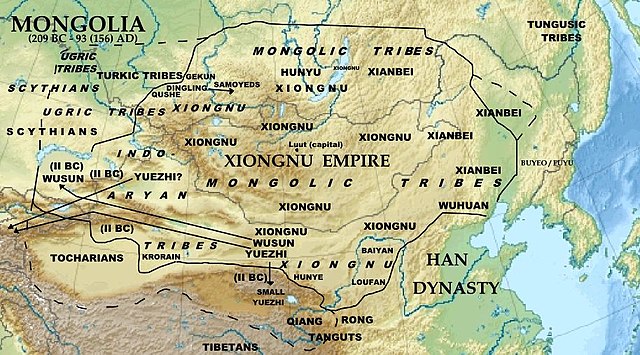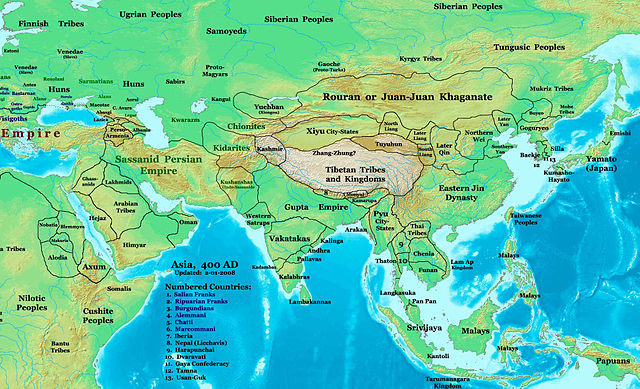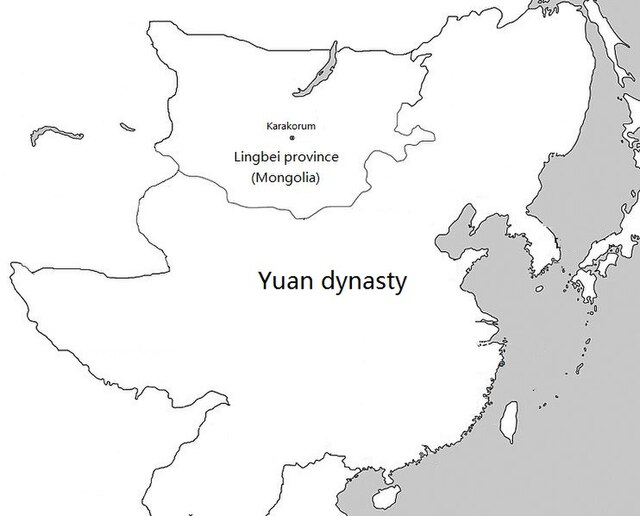Various nomadic empires, including the Xiongnu, the Xianbei state, the Rouran Khaganate (330–555), the First (552–603) and Second Turkic Khaganates (682–744) and others, ruled the area of present-day Mongolia. The Khitan people, who used a para-Mongolic language,
founded an empire known as the Liao dynasty (916–1125), and ruled Mongolia and portions of North China, northern Korea, and the present-day Russian Far East.
Xiongnu Empire
Xianbei state
Rouran Khaganate
Asia in AD 400, showing the Rouran Khaganate, Tuoba's Northern Wei, Xianbei's Tuyuhun Kingdom, Southern Liang, Later Yan and Xiongnu's Üeban and Northern Liang states
The Yuan dynasty ruled over the Mongolian Plateau, including both Inner and Outer Mongolia as well as part of southern Siberia, between 1271 and 1368. The Mongolian Plateau is where the ruling Mongol Borjigin clan of the Yuan dynasty came from, thus it enjoyed a somewhat special status during the Yuan dynasty, although the capital of the dynasty had been moved from Karakorum to Khanbaliq since the beginning of Kublai Khan's reign, and Mongolia had been converted into a regular province, known as the Lingbei Province, by the early 14th century.
Mongolia within the Yuan dynasty under the Lingbei province





